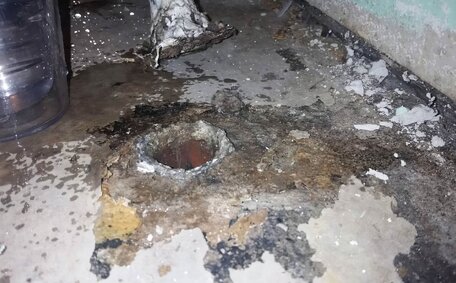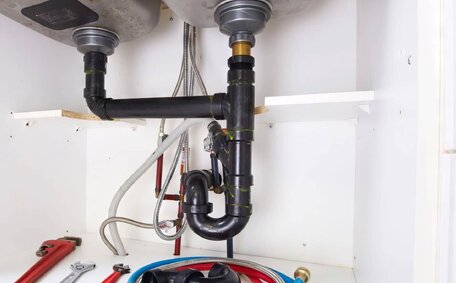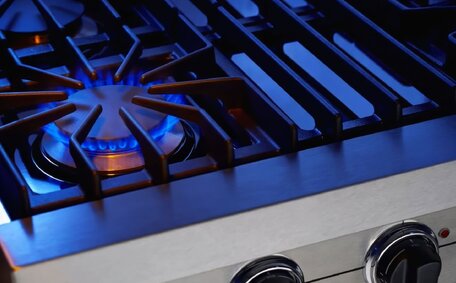Water Heater Troubleshooting Guide
A reliable hot water supply is crucial for comfort in Bankstown homes.
The sudden onset of cold water from taps that normally supply comforting warm showers or baths can cause major discomfort and inconvenience. This guide offers a practical checklist for addressing common hot water system issues.
With our extensive experience, we can tackle a variety of problems with electric, gas, and solar water heaters. We know how frustrating it is to have no hot water and we are here to help get your system up and running again quickly and efficiently.
Use the tips below to identify the cause of cold water issues and restore your hot water. We can also assist with maintenance and repairs if needed. For detailed information or to schedule an appointment, reach out to us at 1300 349 338 or jobs@bankstownplumbingservices.com.au.
Water Heaters Explained: Gas vs Electric Models
When troubleshooting water heater issues, it’s vital to know whether you have a gas or electric system. Gas models rely on a pilot light to ignite the burner and heat water. Electric variants use heating elements powered by electricity instead.
Gas water heaters have a gas valve to regulate flow, a pilot light that must stay lit, and a flue for venting. Key electric water heater components are the heating elements and thermostats controlling them. Both have a cold water inlet, hot water outlet, anode rod and tank drain valve.
Knowing these differences is key to diagnosing problems. For example, if a gas heater pilot light goes out, you’ll lose hot water, whereas if an electric model’s element fails, it could still produce some hot water. If you’re uncertain about your system, call Bankstown Plumbing at 1300 349 338 for assistance.
How Gas Water Heaters Function
Gas water heaters rely on a continuously burning pilot light to heat the water. This small flame heats a thermocouple which signals the gas valve to open when hot water is needed. Gas flows into the burner, igniting from the pilot light and heating the water tank.
The thermostat controls the temperature. Should the water temperature fall beneath the thermostat’s setting, additional gas is sent to the burner for reheating. This continues until the temperature reaches the desired level.
The main components - gas valve, burner, pilot light, and thermostat - work together to heat and store hot water. Problems can occur if any fail, e.g. the pilot light blowing out, thermostat failure resulting in cold water, or gas valve issues providing insufficient gas to heat water.
Warning signs of gas water heater problems include a drop in water temperature, continuous burner operation with no hot water, strange sounds, or the smell of gas indicating a leak. We recommend annual servicing to prevent issues and ensure optimal performance.
How Electric Water Heaters Operate
Electric water heaters work by using electric heating elements to heat water stored in an insulated storage tank. When hot water taps are turned on, cold water enters the tank and is heated by electric elements which are controlled by thermostats to regulate the temperature.
Electric water heater issues like blown thermostatic fuses which lead to no hot water, and failed or sticking thermostats causing the hot cold water dilemma, are common alongside sediment build-up and leaks.
As Bankstown households may utilise either electric or gas systems, being aware of how both operate is handy. If your electric water heater develops a problem, Bankstown Plumbing can troubleshoot the issue and undertake repairs as needed to professional standards.
Troubleshooting Common Water Heater Problems
Should all taps emit cold water, the problem likely stems from your water heater. Ensure the pilot light on gas heaters is active, relighting if necessary.
First, check if you have hot water in other areas of your home; absent that, contact Bankstown Plumbing for support.
Ensure your heater is set to at least 60°C. For gas heaters, check that the pilot flame is a consistent blue.
Adjusting thermostat settings higher can resolve some insufficient hot water issues.
Hot water temperature fluctuating
If water temp goes from hot to cold suddenly, the problem is likely a faulty thermostat.
For gas models, confirm that the pilot flame is robust and steady. Contact Bankstown Plumbing to troubleshoot further.
Unusual Noises from Your Water Heater
Clanking, banging or rumbling noises can indicate sediment build-up and/or failing components like heating elements. Deactivate the unit at the power source and engage Bankstown Plumbing for inspection and servicing.
No hot water
If you have no hot water at all, methodically check the following:
- For gas systems, ensure the pilot light is lit. Relight it with the ignition button if out. Contact Bankstown Plumbing for assistance if needed.
- With electric Models, check all fuses and circuit breakers connected to the water heater and reset any that have tripped.
- Inspect that water supply lines, valves, and pipes have no leaks, are fully open and allowing water flow.
- Make sure your operation of the thermostat is correct, setting to an adequate temperature of at least 60°C.
- Sediment build-up may affect components like heating elements. Have Bankstown Plumbing inspect and flush the system.
- If there are still no hot water issues after checking the above, contact Bankstown Plumbing on 1300 349 338 for additional troubleshooting.
Not enough hot water
If you find you run out of hot water too quickly or taps produce insufficient hot water, potential causes can include:
- Water heater undersized for the home. Assess number of bathrooms/residents and compare to system capacity.
- Thermostat set too low – ensure it is 60-65°C to provide adequate hot water.
- Faulty thermostat providing unreliable/inaccurate water temperatures.
- Sediment build-up reducing heating efficiency. Drain and flush the tank to eliminate sediment.
- Worn heating elements in electric models failing to sufficiently heat water.
- Insufficient gas burner operation in gas models.
- Excessive water pressure causing rapid hot water depletion.
Adjusting the thermostat to a higher temperature may help with short-term hot water issues. However we recommend contacting Bankstown Plumbing on 1300 349 338 for a complete inspection if hot water remains insufficient.
Water not hot enough
To troubleshoot water not heating sufficiently, consider these checks:
- Make sure your water heater thermostat is set to at least 60°C. Temperatures lower than this may fail to heat water adequately.
- Inspect that the pilot light or heating element is working correctly. Gas heaters: check the pilot flame is strong and blue. Electric heaters: test heating elements for faults.
- Flushing the water heater annually removes sediment buildup that can reduce heating efficiency. Arrange for Bankstown Plumbing to service your system.
- If adjusting thermostat settings higher does not resolve insufficient hot water, the thermostat itself may be faulty and require replacing.
Note that setting your water too high risks scalding and wasting energy. Contact Bankstown Plumbing on 1300 349 338 if you need assistance troubleshooting or servicing your hot water system.
Identifying Leaks and Unusual Noises
Strange noises like rumbling, banging or hissing can signal issues inside your hot water system. A frequent cause of flow issues is sediment build-up. Water leaks indicate more serious problems.
To check, turn off the unit at the circuit breaker/gas line and listen closely for noises. Inspect all water connections and components to identify leaks. Dripping taps when the system is under pressure could mean tank corrosion and failure.
Rust accumulations and mineral deposits should be flushed by a professional like Bankstown Plumbing annually. Seek urgent assistance for leaks as they risk electrical dangers and water damage. Preventative checks and maintenance are key for performance and safety.
Safety Precautions When Troubleshooting
When troubleshooting hot water system issues, it’s crucial to follow safety precautions to prevent accidents:
- Turn off power and gas supply before inspecting heaters to avoid electrical shock or gas leaks.
- Allow components to fully cool before touching to prevent burns.
- Do not bypass any safety valves or systems - these prevent system damage.
- Check water temperature before use to avoid scalding, especially for children.
- Maintain water above 60°C to control bacteria like Legionella.
- Install a temperature limiting device for added safety.
- Seek professional assistance from plumbers like Bankstown Plumbing if you have any concerns about the proper, safe operation of your hot water system.
When to Call a Professional Plumber
While the troubleshooting tips in this guide may resolve some basic hot water issues, it’s important to know when a professional plumber should be called in for assistance:
- If you have no hot water at all after working through all troubleshooting steps for your system.
- When relighting the pilot light repeatedly fails to restore hot water.
- Strange noises persist or leaks cannot be stopped after inspection.
- Electrical or thermostat faults require specialised testing equipment to diagnose.
- Sediment build-up returns quickly after flushing the water heater.
- The same problems keep occurring despite DIY troubleshooting efforts.
At Bankstown Plumbing, our licenced, experienced technicians have the expertise to fully assess and repair your water heater. With over a decade serving Bankstown households, we know exactly how to get your hot water running again quickly and safely.
Contact Bankstown Plumbing at 1300 349 338 or jobs@bankstownplumbingservices.com.au for dependable and efficient plumbing services.
Preventative Maintenance for Water Heater Longevity
Consult our maintenance tips for essential information to optimise your hot water heater’s efficiency and lifespan. Homeowners should follow this basic routine:
- Drain the tank sediment yearly by opening the tank drain valve until the water runs clear.
- Check the anode rods biennially or triennially and replace them if they are more than half eroded to prevent tank corrosion.
- Check valve operation to ensure adequate water flow and pressure.
- Insulate hot water pipes to maximise heat retention and prevent energy waste.
- Visually check all fittings and connections for leaks annually and tighten if needed.
- Consider installing a temperature limiting device as an added safety measure.
Properly maintained heaters use less energy, with actions like sediment flushing potentially boosting efficiency by up to 4%. We recommend contacting Bankstown Plumbing on 1300 349 338 to arrange professional inspection and servicing every 3-5 years.
Inspecting valves and anode rods
Inspecting the valves and anode rod of your water heater on a regular basis is an easy way to maintain efficiency and lifespan.
To check the pressure relief valve:
- Locate the valve near the top of the tank
- Ensure the valve is not obstructed and the piping is free of damage
- Gently lift and release the lever to allow a small burst of water through to remove sediment
To inspect the shutoff valve:
- Find where the cold water line connects to the tank
- Turn the valve off and on to ensure smooth operation
- Check for any water leaks with the valve in both positions
To check the anode rod:
- Drain approximately 5 gallons of water from tank
- Remove the anode rod from the tank
- Inspect level of corrosion and erosion to rod
- Replace if more than 50% worn away
Contact Bankstown Plumbing on 1300 349 338 if you need assistance inspecting or replacing any valves or the anode rod in your hot water system.
Flushing sediment
Flushing sediment buildup from your water heater tank is an essential maintenance task that should be done annually. Here are the steps:
- Switch off the power supply to the water heater and let components cool down.
- Connect a garden hose to the tank drain valve near the bottom of the unit.
- Open the pressure relief valve at the top of the tank.
- Open the tank drain valve and let the water comes out until it runs clear with no sediment. This can do take 5-10 minutes.
- Close all valves, refill system with water and restore power once sediment flushing finished.
Regular removal of silt, rust, and minerals is crucial for maintaining optimal performance. Annual professional flushing is advised to preserve optimal system performance.
Preventing sediment buildup also reduces odd noises and prolongs component lifespan.
Insulating pipes and tank
Insulating your hot water pipes and water heater tank prevents valuable heat loss while water sits in the system, saving energy and money on bills. Here are some tips:
- Select pre-split foam tubing insulation rated for temperatures up to 95C, and slide it over pipes for straightforward installation.
- Insulate a minimum of 3-5 metres of hot pipes originating from the water heater.
- Insulate both cold and hot water pipes where they touch to prevent conduction.
- Wrap insulation around the water heater tank itself. Secure with zip ties or duct tape.
- Leave tank valves/controls uncovered for adjustment access.
- For electric heaters, dont cover thermostat access panels.
High-quality insulation on pipes and tanks can reduce heat losses by 25-45%. This can save the average household $30-60 on annual water heating bills. Contact Bankstown Plumbing on 1300 349 338 for professional insulation services.
Conclusion
A dependable hot water supply is vital, without it, daily routines can be significantly disrupted. This guide delivers a comprehensive checklist to diagnose and troubleshoot issues with electric and gas hot water systems.
By following these troubleshooting tips, homeowners can identify and often rectify basic problems independently. However, professionals like Bankstown Plumbing can fix complex faults or safety concerns reliably.
Backed by over 10 years of service in Bankstown, our skilled team is adept at repairing water systems of all types efficiently. For reliable, local plumbing services, contact Bankstown Plumbing on 1300 349 338 or email jobs@bankstownplumbingservices.com.au.






